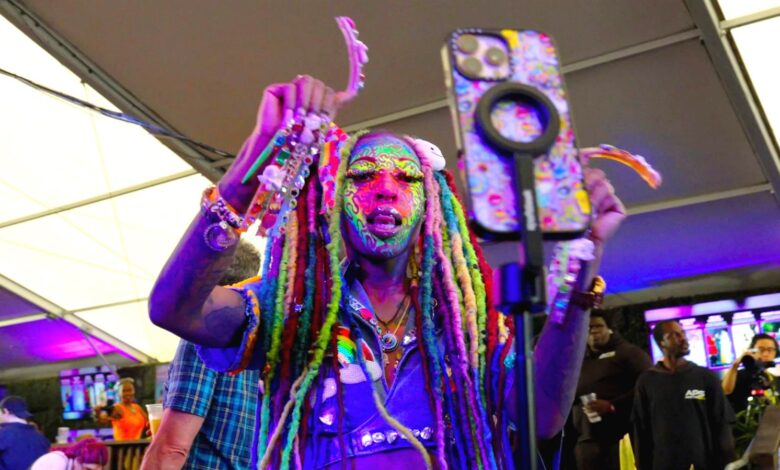
What’s Next for Livestreaming In 2025 And Beyond?
Livestreaming has been a growing form of entertainment in recent years and it is clear that it is here to stay. At its core, livestreaming involves broadcasting live video content over the internet in real-time. It has become one of the most popular forms of content, with a diverse array of creators across various platforms attracting millions of viewers around the globe.
The Rise of Non-Gaming Livestreams
Prior to 2023, gaming livestreams were more popular than non-gaming livestreams. Non-gaming livestreams gained increased popularity in the prelude and aftermath of the COVID 19 pandemic. In August 2023, non-gaming related streaming categories on Twitch accumulated 375 million hours watched, the highest recorded since 2019. Furthermore, the “Just Chatting” category encompasses 27% of all Twitch creators, signaling a shift in content consumption toward more interactive and community-driven experiences.
Popular live streamers such as Kai Cenat and IShowSpeed utilize the “Just Chatting” category to interact with audiences who are eager to feel as though they are part of the streamer’s lives. In the future, livestreaming is set to become more immersive, interactive, and personalized than ever before.
Cultivating Online Communities Through Niche Content
Community-based streamers dedicated to creating content that relates to the experiences of a specific group of people will also achieve success. For example, platforms such as Bigo Live have become known as safe havens for Black queer content creators, allowing them to express their identities without fear of censorship, or harassment. Niche creators connect with audiences interested in theatre, music, makeup design and many others, personifying the many ways in which niche content can foster strong community connections. By sharing their expertise and personal experiences, they have cultivated dedicated followings and opened doors to new opportunities in both their creative fields and the digital economy.
Rise in Social Commerce in the States
The ability to purchase goods on livestreams will also grow in popularity in the wake of the COVID-19 pandemic. Real time audience engagement empowers entrepreneurs to provide a live demonstration of their goods or services, increasing the likelihood that consumers will make a purchase.
With 1 in 4 internet users watching livestreams weekly, the creator economy has experienced significant growth. Over 8.5 billion hours of live stream content were consumed in Q4 of 2024, marking a 10% year-over-year increase. The livestreaming market is estimated to be worth over $60 billion dollars, with the expectation that revenues will surpass $256 billion dollars by 2032.
Livestreaming and Virtual Reality – the Next Tech Development
Companies will further develop their VR & AR capabilities, augmented by the advances in AI (Artificial Intelligence) technology. The ability to livestream virtual and augmented reality experiences will provide creators with cutting-edge opportunities to engage their audiences in immersive ways. These experiences allow for highly interactive events where viewers can engage with content in real-time, from exploring virtual environments, to participating in live decision-making. Creators who integrate VR and AR technology into their streams will have an edge over other creators, creating a space that echoes the interests and desires of the audience, offering personalized and engaging content.
AI Innovations Will Transform the Livestreaming Experience
With a rise in AI tools, AI provides a transformative role in making livestreaming a smoother experience for creators. One of the tools that will come into good use would be Automated Moderation. Automated Moderation helps platforms to remove all sorts of toxic comments, spam and inappropriate behavior from livestreams. By automating this process, creators can focus more on engaging with their audience and enhancing their content.
Personalization is also another tool that is used to improve the livestreaming experience for both the viewers and the creators. This tool allows for content to be more personalized and results in more tailored recommendations and higher engagement. Platforms which constantly innovate, developing interactive in-app features and AI tools such as digital avatars, multi-guest livestreams and virtual gifts, will add new dimensions to the livestreaming experience. Content creators can use this to their advantage since their content will now be able to reach the right audience.
That being said, as much as AI tools help with enhancing the livestreaming process for both viewers and creators, it cannot wholly substitute creators. Livestreaming is only truly successful because of the human connection that creators bring. AI can help to optimize the livestreaming process. However, it is the authentic connection that creators bring that makes people come back to watch more.
Conclusion
Livestreaming will continue to become more popular in 2025 and beyond. As consumers prefer to engage with creators and brands that relate to their values, the ability to engage with creators authentically, make live purchases and feel connected to a larger community has contributed and will continue to contribute to the success of the livestreaming industry.





